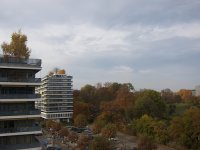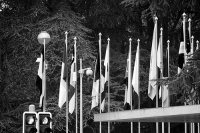-
You are here:
- Homepage »
- France »
- Rhone-Alpes » Segny

Segny Destination Guide
Explore Segny in France
Segny in the region of Rhône-Alpes with its 1,493 inhabitants is a town in France - some 248 mi or ( 399 km ) South-East of Paris , the country's capital city .
Current time in Segny is now 03:20 PM (Sunday) . The local timezone is named " Europe/Paris " with a UTC offset of 1 hours. Depending on the availability of means of transportation, these more prominent locations might be interesting for you: Geneva, Versonnex, Segny, Saint-Julien-en-Genevois, and Saint-Genis-Pouilly. Since you are here already, make sure to check out Geneva . We saw some video on the web . Scroll down to see the most favourite one or select the video collection in the navigation. Where to go and what to see in Segny ? We have collected some references on our attractions page.
Videos
ILS Approach in Thunderstorm Rain with Cessna Turboprop
There was a cold front crossing over the Swiss Alps on that rainy fall sunday. We descended through the overcast and came out at 5000 feet in rain showers. ..
GOLDEN SUN - Mario Paint - Dragon Fusion Battle
Created on "mariopaintcomposer" by Domino & Reglisse. (Done by ear, after the original soundtrack and using slowdown on a midi file for the last segment of the song) More infos to be issued soon! :p H ..
Large Hadron Collider - CERN Open day 2008
Sunday 6 April 2008 CERN Large Hadron Collider Open day in Geneve, Switzerland ..
Landing in Geneva
Landing in Geneva, Switzerland with Augsburg Airlines de Havilland Canada DHC-8 also known as a "Dash 8" ..
Videos provided by Youtube are under the copyright of their owners.
Interesting facts about this location
Compact Muon Solenoid
The Compact Muon Solenoid (CMS) experiment is one of two large general-purpose particle physics detectors built on the Large Hadron Collider (LHC) at CERN in Switzerland and France. The goal of CMS experiment is to investigate a wide range of physics, including the search for the Higgs boson, extra dimensions, and particles that could make up dark matter. CMS is 25 metres long, 15 metres in diameter, and weighs about 12,500 tons.
Located at 46.31 6.08 (Lat./Long.); Less than 1 km away
TOTEM
A totem is a being, object, or symbol representing an animal or plant that serves as an emblem of a group of people, such as a family, clan, group, lineage, or tribe, reminding them of their ancestry (or mythic past). In kinship and descent, if the apical ancestor of a clan is nonhuman, it is called a totem. Normally this belief is accompanied by a totemic myth. They have been around for many years.
Located at 46.31 6.08 (Lat./Long.); Less than 2 km away
Arrondissement of Gex
The arrondissement of Gex is an arrondissement of France in the Ain department in the Rhône-Alpes region. It has three cantons and 29 communes.
Located at 46.32 6.07 (Lat./Long.); Less than 2 km away
LHCb
LHCb (standing for "Large Hadron Collider beauty") is one of seven particle physics detector experiments collecting data at the Large Hadron Collider accelerator at CERN. LHCb is a specialized b-physics experiment, that is measuring the parameters of CP violation in the interactions of b-hadrons (heavy particles containing a bottom quark). Such studies can help to explain the Matter-Antimatter asymmetry of the Universe.
Located at 46.24 6.10 (Lat./Long.); Less than 6 km away
ATLAS experiment
ATLAS (A Toroidal LHC Apparatus) is one of the seven particle detector experiments constructed at the Large Hadron Collider (LHC), a particle accelerator at CERN (the European Organization for Nuclear Research) in Switzerland. The experiment is designed to take advantage of the unprecedented energy available at the LHC and observe phenomena that involve highly massive particles which were not observable using earlier lower-energy accelerators.
Located at 46.24 6.06 (Lat./Long.); Less than 7 km away
Pictures
Historical Weather
Related Locations
Information of geographic nature is based on public data provided by geonames.org, CIA world facts book, Unesco, DBpedia and wikipedia. Weather is based on NOAA GFS.




